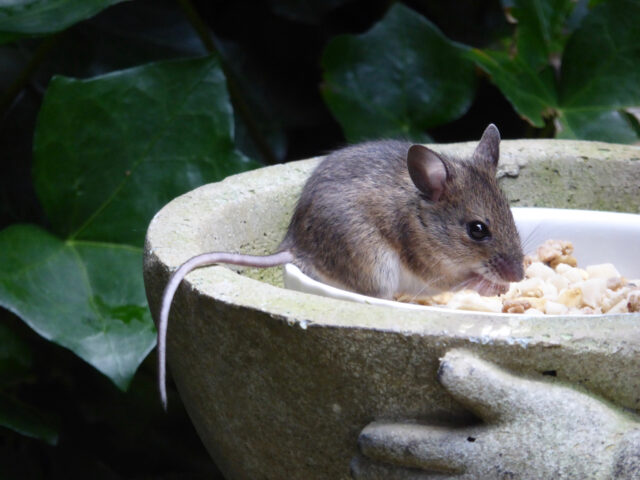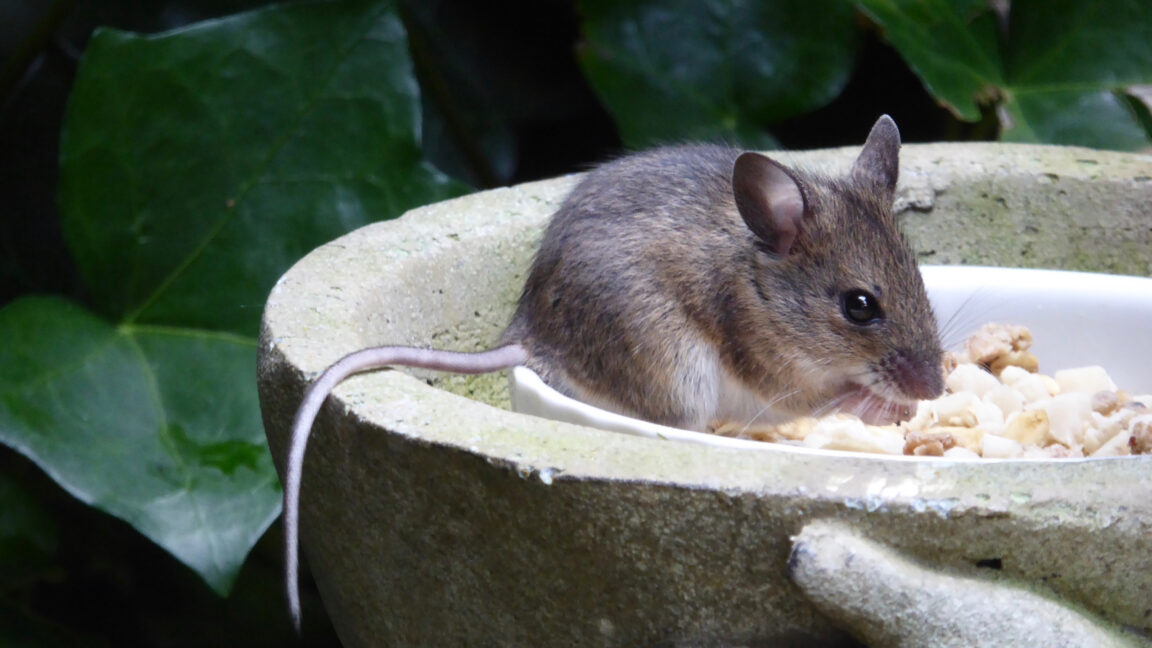- Регистрация
- 17 Февраль 2018
- Сообщения
- 38 866
- Лучшие ответы
- 0
- Reactions
- 0
- Баллы
- 2 093
Offline
Signaling from retinoic acid appears to be key to getting mice to regrow ear damage.


Credit: Corinne von Nordmann
Regeneration is a trick many animals, including lizards, starfish, and octopuses, have mastered. Axolotls, a salamander species originating in Mexico, can regrow pretty much everything from severed limbs, through eyes and parts of brain, to the spinal cord. Mammals, though, have mostly lost this ability somewhere along their evolutionary path. Regeneration persisted, in a limited number of tissues, in just a few mammalian species like rabbits or goats.
“We were trying to learn how certain animals lost their regeneration capacity during evolution and then put back the responsible gene or pathway to reactivate the regeneration program,” says Wei Wang, a researcher at the National Institute of Biological Sciences in Beijing. Wang’s team has found one of those inactive regeneration genes, activated it, and brough back a limited regeneration ability to mice that did not have it before.
Of mice and bunnies
The idea Wang and his colleagues had was a comparative study to compare how the wound healing process works in regenerating and non-regenerating mammalian species. They chose rabbits as their regenerating mammals and mice as the non-regenerating species. As the reference organ, the team picked the ear pinna. “We wanted relatively simple structure that was easy to observe and yet composed of many different cell types,” Wang says. The test involved punching holes in the ear pinna of rabbits and mice and tracking the wound-repairing process.
The healing process began in the same way in rabbits and mice. Within the first few days after the injury, a blastema—a mass of heterogeneous cells—formed at the wound site. “Both rabbits and mice will heal the wounds after a few days,” Wang explains. “But between the 10th and 15th day, you will see the major difference.” In this timeframe, the earhole in rabbits started to become smaller. There were outgrowths above the blastema—the animals were producing more tissue. In mice, on the other hand, the healing process halted completely, leaving a hole in the ear.
Wang’s team compared the highly active genes in both rabbits and mice after injury and traced the roots of this difference to a gene called Aldh1a2, which was strongly activated in rabbits and remained inactive in mice.
The regrowth acid
The Aldh1a2 gene triggers the production of retinoic acid, a substance derived from vitamin A. Retinoic acid is crucial for cell positioning, growth, and specialization in embryos. Wang’s team noticed that the retinoic acid in rabbits was directing the cells to form new ear pinna tissues. “Mice, on the other hand, had very high activity in genetic pathways responsible for degradation of retinoic acid and very low activity in pathways responsible for synthesizing it,” Wang says. So, to test if the lack of retinoic acid really was the factor blocking the regeneration in mice, the team simply injected it into the wounded ears of mice. And it worked.
Mice that received regular injections with retinoic acid managed to fully regenerate ear pinna tissues just like the rabbits did. That was a bit surprising, since injecting retinoic acid to trigger the regeneration of the ear pinna punch wounds in mice has been tried before by a Polish research team without success in 2022. “I think the concentration of the acid they injected there was not high enough and the duration of these injections was not long enough,” Wang says. “Retinoic acid has a very short life.”
Once the regenerative magic of retinoic acid was confirmed, the team went on to test whether they had found the right gene. To do that, checked the rabbit genome for regions of DNA that could increase the activity of Aldh1a2. These were put near the mouse version of the gene to determine if they drove activity up to the levels observed in rabbits. This also worked well—the modified Aldh1a2 gene enabled the mice to produce their own retinoic acid and use it for complete regeneration of ear pinna.
That said, we’re still rather far away from making regeneration pills that would let us regrow lost limbs and organs like axolotls.
Piece of a puzzle
The first problem is the mechanisms responsible for regeneration are extremely complex and Wang’s team study uncovered just one piece of a huge puzzle. The first unanswered question is whether the gene Wang and his colleagues identified in their study is universal to all organs, or specific to just the ear pinna. “Adding back the retinoic acid can activate ear pinna regeneration but may not be able to activate the regeneration of heart or other organs,” Wang acknowledged. “We need to test that but at this moment we don’t know.” He said that all organs have their own distinct evolutionary history and may have lost the ability to regenerate for different reasons.
Regeneration, on the face of it, seems like a very useful thing, yet most mammals have lost their ability to regenerate. Wang’s team wants to understand the reason why the regeneration genes, still buried deep in the mammalian genome, were switched off in the first place, before attempting to switch them back on. “We don’t know what was the ecological driving force that led to the loss of regeneration ability in most mammals. What was the advantage? We are trying to figure this out,” Wang said.
Science, 2025. DOI: 10.1126/science.adp0176


Credit: Corinne von Nordmann
Regeneration is a trick many animals, including lizards, starfish, and octopuses, have mastered. Axolotls, a salamander species originating in Mexico, can regrow pretty much everything from severed limbs, through eyes and parts of brain, to the spinal cord. Mammals, though, have mostly lost this ability somewhere along their evolutionary path. Regeneration persisted, in a limited number of tissues, in just a few mammalian species like rabbits or goats.
“We were trying to learn how certain animals lost their regeneration capacity during evolution and then put back the responsible gene or pathway to reactivate the regeneration program,” says Wei Wang, a researcher at the National Institute of Biological Sciences in Beijing. Wang’s team has found one of those inactive regeneration genes, activated it, and brough back a limited regeneration ability to mice that did not have it before.
Of mice and bunnies
The idea Wang and his colleagues had was a comparative study to compare how the wound healing process works in regenerating and non-regenerating mammalian species. They chose rabbits as their regenerating mammals and mice as the non-regenerating species. As the reference organ, the team picked the ear pinna. “We wanted relatively simple structure that was easy to observe and yet composed of many different cell types,” Wang says. The test involved punching holes in the ear pinna of rabbits and mice and tracking the wound-repairing process.
The healing process began in the same way in rabbits and mice. Within the first few days after the injury, a blastema—a mass of heterogeneous cells—formed at the wound site. “Both rabbits and mice will heal the wounds after a few days,” Wang explains. “But between the 10th and 15th day, you will see the major difference.” In this timeframe, the earhole in rabbits started to become smaller. There were outgrowths above the blastema—the animals were producing more tissue. In mice, on the other hand, the healing process halted completely, leaving a hole in the ear.
Wang’s team compared the highly active genes in both rabbits and mice after injury and traced the roots of this difference to a gene called Aldh1a2, which was strongly activated in rabbits and remained inactive in mice.
The regrowth acid
The Aldh1a2 gene triggers the production of retinoic acid, a substance derived from vitamin A. Retinoic acid is crucial for cell positioning, growth, and specialization in embryos. Wang’s team noticed that the retinoic acid in rabbits was directing the cells to form new ear pinna tissues. “Mice, on the other hand, had very high activity in genetic pathways responsible for degradation of retinoic acid and very low activity in pathways responsible for synthesizing it,” Wang says. So, to test if the lack of retinoic acid really was the factor blocking the regeneration in mice, the team simply injected it into the wounded ears of mice. And it worked.
Mice that received regular injections with retinoic acid managed to fully regenerate ear pinna tissues just like the rabbits did. That was a bit surprising, since injecting retinoic acid to trigger the regeneration of the ear pinna punch wounds in mice has been tried before by a Polish research team without success in 2022. “I think the concentration of the acid they injected there was not high enough and the duration of these injections was not long enough,” Wang says. “Retinoic acid has a very short life.”
Once the regenerative magic of retinoic acid was confirmed, the team went on to test whether they had found the right gene. To do that, checked the rabbit genome for regions of DNA that could increase the activity of Aldh1a2. These were put near the mouse version of the gene to determine if they drove activity up to the levels observed in rabbits. This also worked well—the modified Aldh1a2 gene enabled the mice to produce their own retinoic acid and use it for complete regeneration of ear pinna.
That said, we’re still rather far away from making regeneration pills that would let us regrow lost limbs and organs like axolotls.
Piece of a puzzle
The first problem is the mechanisms responsible for regeneration are extremely complex and Wang’s team study uncovered just one piece of a huge puzzle. The first unanswered question is whether the gene Wang and his colleagues identified in their study is universal to all organs, or specific to just the ear pinna. “Adding back the retinoic acid can activate ear pinna regeneration but may not be able to activate the regeneration of heart or other organs,” Wang acknowledged. “We need to test that but at this moment we don’t know.” He said that all organs have their own distinct evolutionary history and may have lost the ability to regenerate for different reasons.
Regeneration, on the face of it, seems like a very useful thing, yet most mammals have lost their ability to regenerate. Wang’s team wants to understand the reason why the regeneration genes, still buried deep in the mammalian genome, were switched off in the first place, before attempting to switch them back on. “We don’t know what was the ecological driving force that led to the loss of regeneration ability in most mammals. What was the advantage? We are trying to figure this out,” Wang said.
Science, 2025. DOI: 10.1126/science.adp0176
